Alato Arvet Burgundy
The True Nature of Modern Everyday Watches
August 2, 2025
Ever since wristwatches became acceptable and popular for both men and women in the mid 1910s, they have become means of self-expression as well as practical wrist-worn tools for keeping our lives organized. So they became instruments we relied upon everyday and design objects, or one or the other depending on which genre of horology you’re into. Tool watches, by their very own raison d’être, are more tools than fashion accessories, but everyday watches have been and can be both. Because why not make something we want to use everyday, something we can derive pleasure from looking at? Exactly. And so beginning with Seiko’s first quartz-powered machine from 1969—the evil Astron 35SQ which jumpstarted the “Quartz Crisis”—and the invention of the first digital display hand-held phone in the late 1980s/early 1990s—the period when something else than a watch could show us the time—horology has slowly and slowly become less necessary and more of an exercise in inventiveness and individual creativity.
This isn’t to say that brands and designers a century ago didn’t have the time of their life designing singular timekeeping devices, because they did. But this is to say that now more than ever, brands can first create something that expresses a thought, a vision, or a personality trait rather than a tool that has to follow strict technical and design specifications. You’ve already heard me moan about the machine watches which “defy the norm” and which “prove that a watch doesn’t need three hands to tell the time,” but I’m sorry not sorry because a brand/designer can come up with something unique without having to err too much into the conceptual, cubist, and transcendent design genres. And so all of these previously typed words make for the perfect segue to the Alato Arvet Burgundy, an everyday timepiece full of character which exemplifies the true nature of everyday watches—watches we can wear everyday to showcase our personality and not only flex at a watch meetup.

Specifications
There is a bit of misconception—or disagreement I should say—around what an “everyday watch” is and what it isn’t. For some, it is what others refer to as a go-anyhere-do-anything (GADA) watch because that’s the kind of timekeeping device they use everyday, anywhere, to do about anything. So, in other words, a tough-as-fuck tool watch that can banged around, submerged in water, and thrown into a mud pool and come out of these situations unscathed and ticking with unaltered precision. For others, it is a watch we can wear everyday like we can wear a nice pair of shoes everyday or drive our urban car everyday. So a watch that can perform well in most situations we find ourselves in regularly and realistically—not the one-off occurrence during our summer vacation. Think of watches folks wore everyday before that computers and smartphones showed us the time at any moment, which were elegant enough to fly under the radar and robust enough to survive most everyday situations.
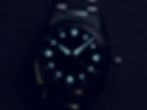
With that said, let’s study the specifications of the Alato Arvet and how they endow it with a proper everyday nature. First, the Arvet is equipped with a very post-COVID 19 elongated and flat case profile we’ve seen a few times before on Mainspring—for example in the Monbrey MB1 L01 Silver, HTD Hesagraph MKII Variante B, and Palmos One Olive Green—which instantly give any watch a noticeable wrist presence. This presence can also be explained by looking at the dimensions of this model: 38mm in diameter, 46mm lug-to-lug, 10.9mm thick and coming with a 20mm lug width. The most important measurement here is the reasonable thickness of the watch which we will later put side-by-side with the case design. So the Arvet is modern by its dimensions which is typical of today’s everyday watches, and such dimensions are often paired with good water resistance (100 meters), superior scratch-resistance (1200Hv), and good lume (BGW9), all of which we have here.
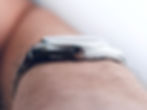
Moreover, the octagonal crown screws-down, so does the see-through sapphire case-back, the latter letting us admire the Miyota 9039 caliber within (4Hz/42 hours of power reserve) which comes with a gorgeous rounded triangular-shaped custom rotor (more on that later.) The top crystal is a double-domed piece of sapphire with five layers of inner anti-reflective coating, and the bracelet, my oh my. It has a three-link “H” construction with polished center links, female end-links, screwed links, quick-release spring-bars, and a double-pusher deployant clasp with built-in tool-less micro-adjustment mechanism. (Alato describes it as “on the fly” because one can tighten it whilst wearing the watch but one cannot extend it whilst wearing the watch.) So the movement, case dimensions, scratch-resistant coating, depth rating, and lume all come together to endow the Arvet with an indeed everyday nature. And one can acquire such an everyday timepiece for the reasonable sum of $549 USD.
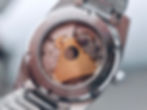
Design
Mechanically then, the Alato Arvet Burgundy is a capable everyday timepiece, though what it is made of is becoming more common nowadays. The Circula Facet, Clemence Munro Cairn, and DUG Purist Typ 2, are equally well equipped for everyday adventures and equally endowed with everyday looks. Robust daily wear watches are something micro and independent brands are focusing more on, perhaps because that’s something mainstream brands do very well and better than the micros. Many of us like the idea of wearing an Omega Railmaster or Rolex Oyster Perpetual for they are beautiful and highly engineered watches, but an equal number of us cannot afford the aforementioned horological creations. So there is a narrow gap within the watch market for attainable and solid everyday wear timepieces. Whilst the Circula, Clemence, and DUG retail between $711 USD and $1,890 USD on a bracelet, the Alato Arvet’s $549 USD price tag makes it a solid option for an everyday watch with a character of its own.

And so let’s go back to the rotor and how it tells us the story of the Arvet’s design. For this model, Alato found inspiration in a german mechanical engineer by the name of Franz Reuleaux (1829-1905) who, amongst many other things, pioneered the study of machines for translating one type of motion into another (see this article for more) and used Reuleaux triangles in his designs, moving mechanical engineering from technical experiments to being established on rules of mathematics and natural sciences. The Reuleaux triangle is a curved triangle with constant width on all three sides, an elegant geometrical shape we find integrated within the Arvet’s design in two places. First one the rotor and second in the applied hour markers at the cardinal points, made of polished yellow-gold like material and filled to the brim with luminescent compound. These markers are accompanied by similarly finished circular markers and teardrop-shaped hands framed by a multi-layered and multi-textured dial.
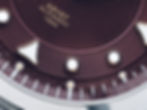
At its center, the dial showcases a pressed guilloché section showcasing a diamond round pattern, in other words a repetition of curved lines shooting in two opposite directions and crossing each other at a seemingly unlimited number of points, which is obviously superb to look at. Beyond it a raised portion of the dial is composed of grooved concentric circles on top of which are applied the hour markers, and beyond that a deeply pressed melted-plastic like pattern on top of which is printed the minute track and additional lume dots circled by white lines. Actually, all latter elements are printed onto slightly raised sections of the dial which, combined to the central guilloché pattern and raised hour track, endow the dial of the Arvet with intense depth. In the center the brand’s logo and watermark, as well as the words “Arvet,” “Automatic” and “100M” are printed in gold color onto raised portions of the dial as well. Though the Reuleaux triangle was a cool design inspiration, the brand went far beyond that.
As we’re nearing the end of the study of the Arvet, we ought to linger a bit on the case’s design which contrasts sharply, from a geometrical perspective, with the dial. While the latter is all about roundness and gentle curves, the former is about flat surfaces and facets and reminds me of Seiko’s Grammar of Design established in 1962. (Actually, the case profile must have been inspired by one of several Seiko’s and Grand Seiko’s models from that time period.) Not only is it flat, as we know 10.9mm in thickness, but it is also endowed with four massive polished chamfers which run north-south from the edges of the lugs to the case sides. The outer edges of the lugs are then faceted and connected to the narrow and curved horizontally brushed case flanks. Which means that seen from above, the case is wide, long, and more or less rectangular. Seen from the side, it is flat like a pancake. The polished fixed bezel then sits deeply inside the mid-case.
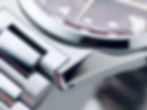
Yeah, you get a lot of design for your $549 USD I must say.
The Heart of the Matter
Over the past four years I’ve observed that Nordic brands (Alato is Swedish) excel in creating everyday watches whose design strikes the perfect yet thin balance between the common and the bespoke. They have a way to come up with new visual languages that many brands from other parts of the world are just incapable of inventing. And why that will remain a mystery till I study the cultural, design, and historical heritage of nordic countries. But Alato has created a visual language of its own, though inspired by other fields of human study, and we can find the same singularity in design as we did with Monbrey and Circula. And so we should look into who created Alato: Pierre Strömbäck, an architect and civil engineer, during the day and watch nerd by night. Based on my experience, I can tell you that architects, designers, and now engineers who are into horology have their own way of designing singular watches which double as outstanding everyday companions.
And that’s what the Alato Arvet Burgundy is: a visually striking and mechanically sound everyday timepiece which embodies the true nature of today’s daily wearers.

Conclusion
At the time of writing this article, the Alato Arvet comes in a total of five colors, two of which are brand new: Black, Blue, Burgundy, Green, and White. (The latter two are the new ones.) And there is a limit of 300 pieces for all colorways so if you find one that tickles your horological heart more than another, don’t overthink it and at once pull the trigger on the Arvet. For $549 USD, you get your fill of good specs and character, more so than many other everyday timepieces I’ve had the privilege of looking at and which exist on the market today. Understand this: the Arvet constitutes excellent value for your money for you will have a singular design paired with great specs in a way that you won’t often see today. Just sayin’.
Thanks for reading.








































